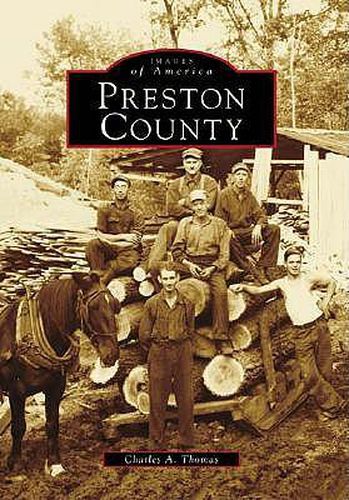Readings Newsletter
Become a Readings Member to make your shopping experience even easier.
Sign in or sign up for free!
You’re not far away from qualifying for FREE standard shipping within Australia
You’ve qualified for FREE standard shipping within Australia
The cart is loading…






Preston County, West Virginia, is the only county in the United States with that name. It lies nestled into a corner of the state bounded on the north by Pennsylvania and the Mason-Dixon Line, and on the east by the state of Maryland. This scenic Appalachian region has a variance in elevation from a low of 870 feet to a high of 3,236 feet. With more tillable land than any other county in the state, Preston County is naturally a farming community, although mining, timber, recreation, and tourism are vital contributors to the county’s economy. In this vibrant retrospective, local author Charles A. Thomas brings the county’s past to life, covering the period from 1890 to the mid-1900s. Vintage images portray the pioneer era, the early commercial and industrial ventures here, and the people who brought it all about. We visit turn-of-the-century schools and mills, and see the trains and railroaders who made this area prosper in the late 1800s. Preston County, West Virginia, is the only county in the United States with that name. It lies nestled into a corner of the state bounded on the north by Pennsylvania and the Mason-Dixon Line, and on the east by the state of Maryland. This scenic Appalachian region has a variance in elevation from a low of 870 feet to a high of 3,236 feet. With more tillable land than any other county in the state, Preston County is naturally a farming community, although mining, timber, recreation, and tourism are vital contributors to the county’s economy. In this vibrant retrospective, local author Charles A. Thomas brings the county’s past to life, covering the period from 1890 to the mid-1900s. Vintage images portray the pioneer era, the early commercial and industrial ventures here, and the people who brought it all about. We visit turn-of-the-century schools and mills, and see the trains and railroaders who made this area prosper in the late 1800s.
$9.00 standard shipping within Australia
FREE standard shipping within Australia for orders over $100.00
Express & International shipping calculated at checkout
Preston County, West Virginia, is the only county in the United States with that name. It lies nestled into a corner of the state bounded on the north by Pennsylvania and the Mason-Dixon Line, and on the east by the state of Maryland. This scenic Appalachian region has a variance in elevation from a low of 870 feet to a high of 3,236 feet. With more tillable land than any other county in the state, Preston County is naturally a farming community, although mining, timber, recreation, and tourism are vital contributors to the county’s economy. In this vibrant retrospective, local author Charles A. Thomas brings the county’s past to life, covering the period from 1890 to the mid-1900s. Vintage images portray the pioneer era, the early commercial and industrial ventures here, and the people who brought it all about. We visit turn-of-the-century schools and mills, and see the trains and railroaders who made this area prosper in the late 1800s. Preston County, West Virginia, is the only county in the United States with that name. It lies nestled into a corner of the state bounded on the north by Pennsylvania and the Mason-Dixon Line, and on the east by the state of Maryland. This scenic Appalachian region has a variance in elevation from a low of 870 feet to a high of 3,236 feet. With more tillable land than any other county in the state, Preston County is naturally a farming community, although mining, timber, recreation, and tourism are vital contributors to the county’s economy. In this vibrant retrospective, local author Charles A. Thomas brings the county’s past to life, covering the period from 1890 to the mid-1900s. Vintage images portray the pioneer era, the early commercial and industrial ventures here, and the people who brought it all about. We visit turn-of-the-century schools and mills, and see the trains and railroaders who made this area prosper in the late 1800s.